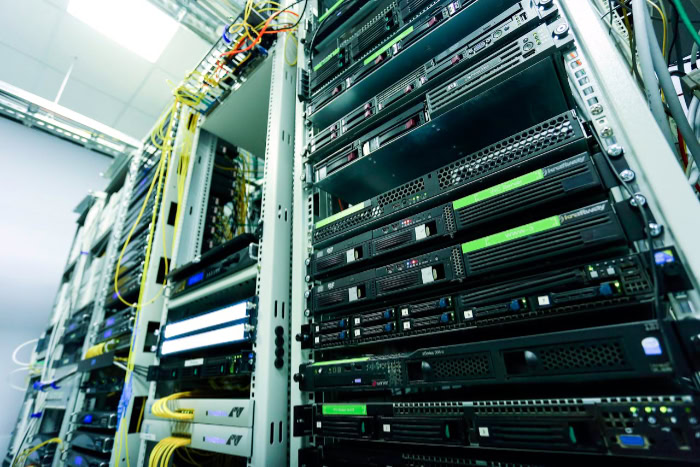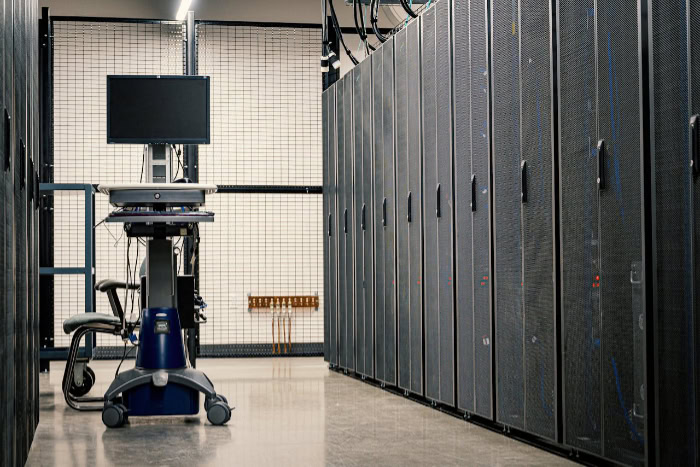What Is a Server Farm? Definition, Benefits, and Challenges

Rows of humming machines fill massive rooms, quietly powering much of modern life. From streaming your favorite shows to running complex AI, these clusters of servers, commonly known as server farms, form the backbone of countless online services.
Their ability to process enormous amounts of data makes them essential for everything from social media and cloud storage to scientific research. Behind the scenes, intricate systems distribute workloads, keep machines cool, and ensure reliable performance around the clock.
As digital demands continue to expand, server farms are shaping how technology scales efficiently and securely, bridging the gap between innovation and everyday convenience.
Definition and Core Components
Server farms represent large collections of interconnected servers designed to handle vast and complex computing tasks simultaneously. Their main purpose centers on supporting high-demand digital services, often operating out of specially designed facilities optimized for performance, scalability, and efficiency.
To achieve this, server farms rely on several fundamental components working together to create a robust and resilient infrastructure.
Physical Infrastructure
The foundation of any server farm lies in its physical setup. Rows of metal racks hold stacks of servers, each one a powerful computer built for nonstop operation.
Alongside the servers, essential elements like power supplies and networking hardware keep the system running smoothly. Network switches, routers, and cabling enable fast communication both within the server farm and beyond, connecting to the outside internet.
Careful organization, labeling, and routing ensure technicians can manage and maintain the hardware easily, even as the number of servers grows.
Support Systems
Performance and uptime depend greatly on sophisticated support systems built into every facility. Robust cooling mechanisms, such as liquid cooling circuits and advanced HVAC units, prevent overheating and maintain an optimal environment for the hardware.
Redundancy protocols protect against unexpected failures, with backup power supplies stepping in during outages and duplicate network connections keeping data flowing smoothly. These systems work together to minimize downtime, safeguard data, and maintain high levels of service reliability.
Scale
Server farms come in many sizes, ranging from modest clusters supporting smaller organizations to expansive complexes housing thousands of servers. Some facilities span the size of a warehouse or even larger, supporting regional or global operations for major companies and cloud providers.
Scalability allows for easy expansion as demand increases, enabling organizations to meet future challenges without overhauling their existing infrastructure. This adaptability is a significant advantage, making server farms suitable for nearly any computing need, from hosting a single website to powering artificial intelligence research.
Functionality and Key Applications

Server farms perform much more than merely housing clusters of computers. Their functionality enables modern technology to operate smoothly, supporting a wide range of applications that affect daily life, business, and scientific advancement.
Efficient management of resources, advanced redundancy techniques, and diversified use cases all contribute to the powerful impact of server farms on computing today.
Workload Distribution
Efficient resource allocation forms the core of server farm operations. Through advanced load balancing systems, traffic is distributed evenly across available servers, preventing any single machine from becoming overloaded.
Automated routing systems assess real-time demands and direct data or requests to the servers best able to handle them at any given moment. This approach maximizes performance and helps maintain a seamless user experience, even during high-traffic periods.
The division of labor ensures that large volumes of tasks, from millions of website visits to massive data processing requests, are handled without bottlenecks.
Redundancy
Continuous service is a major expectation for server farms, prompting the implementation of robust failover systems. Redundancy ensures that if one server or component encounters a problem, another immediately takes over without any noticeable interruption to users.
Multiple power supplies, backup servers, and mirrored data storage systems all contribute to this resilience. Through redundancy, server farms maintain high availability for critical services, ensuring businesses, researchers, and regular users never lose access to essential online resources.
Use Cases
The versatility of server farms extends across numerous industries and applications. Web hosting and content delivery networks rely on server farms to distribute data quickly and efficiently to users around the world.
Cloud computing platforms, offering Infrastructure as a Service (IaaS) and Software as a Service (SaaS), depend on scalable server farms to deliver resources, run applications, and store information on demand. High-performance computing tasks, such as artificial intelligence modeling and scientific simulations, harness the collective power of thousands of servers working in unison.
This broad range of use cases highlights the adaptability of server farms, enabling everything from daily internet browsing to the most demanding computational workloads.
Operational Benefits

Designing and managing a server farm brings a variety of advantages that make large-scale computing feasible for businesses, researchers, and service providers. Server farms prioritize efficiency, minimize risk, and make it possible to grow operations rapidly in response to changing needs.
The operational benefits serve as driving factors behind the widespread adoption and continued evolution of these advanced infrastructures.
Scalability
One of the most attractive qualities of server farms is their inherent scalability. Expansion does not require redesigning the entire system or making significant changes to existing structures.
Instead, additional servers can be incorporated as demands grow, allowing organizations to respond quickly to increased workload or storage requirements. This flexibility supports everything from rapid business growth to sudden spikes in user activity, all while maintaining strong performance.
Cost Efficiency
Economies of scale play a significant role in the appeal of server farms. By sharing resources such as power supplies, cooling systems, and network infrastructure across many servers, operational costs are kept lower compared to stand-alone systems.
Bulk purchasing of hardware, more efficient energy use, and centralized management all contribute to reducing the cost per unit of computing power. Organizations benefit from streamlined operations that help them allocate their budgets more effectively, making powerful computing accessible without prohibitive expense.
Reliability
Reliability remains a critical expectation for any organization relying on constant uptime. Server farms address this need with redundant systems, backup power supplies, and robust workload distribution.
If a server or component fails, the system automatically redirects tasks to healthy machines, maintaining seamless service delivery. Backup generators and multiple network connections further minimize downtime, allowing server farms to support mission-critical applications and services with confidence.
The result is a high level of dependability that users and businesses can trust day and night.
Challenges and Limitations

Relying on server farms for massive computational power introduces a range of hurdles that technology teams and organizations must confront. Despite their performance and reliability, server farms come with notable challenges that can affect sustainability, efficiency, and operational strategies.
Balancing the need for robust computing with these limitations requires careful planning and ongoing innovation.
Energy Consumption
Meeting the power needs of a server farm is no small feat, often requiring vast amounts of electricity to operate hardware around the clock. The cumulative energy consumption has a direct environmental impact, contributing to higher utility bills and an increased carbon footprint.
As server farms grow larger to meet rising demand, the responsibility to source greener energy and improve efficiency intensifies. Striving for sustainable solutions has become a priority, but the energy demands remain a significant concern for both operators and communities.
Cooling Requirements
Maintaining optimal temperatures in dense server environments presents a continuous challenge. High-performance servers generate substantial heat, and without proper thermal management, hardware reliability and lifespan can quickly deteriorate.
Cooling systems must operate efficiently to prevent overheating, yet they can consume nearly as much energy as the servers themselves. Innovations in cooling, such as liquid cooling and advanced airflow management, help mitigate risks, but the quest to balance cooling effectiveness with energy conservation remains ongoing.
Operational Costs
Managing a server farm extends far beyond simply powering and cooling hardware. Skilled technicians, engineers, and IT professionals are required to monitor systems, address failures, and perform routine maintenance.
Staffing shortages, especially for specialized roles, can hinder effective operations. Hardware upkeep and regular upgrades add to costs, while global supply chain fluctuations can delay the delivery of crucial replacement parts or new equipment.
These operational concerns often demand strategic focus and resource allocation to maintain the high standards expected from modern server farms.
Server Farms vs. Data Centers

Although people often use the terms interchangeably, server farms and data centers represent distinct concepts in the world of large-scale computing. Both play essential roles in keeping digital services operational, yet their scope, evolution, and degree of specialization set them apart.
Clarity on how they differ helps illuminate how modern technology is housed, managed, and optimized for a variety of applications.
Scope
Server farms concentrate specifically on collections of servers, often optimized for heavy computing and processing workloads. The focus rests on maximizing computational output and efficiency through coordinated clustering.
Data centers, on the other hand, refer to entire facilities that encompass much more than just servers. Within a data center, one finds not only server clusters but also substantial storage solutions, intricate networking infrastructure, robust security systems, and environmental controls.
Data centers act as the physical and digital backbone for enterprises and cloud providers, managing data, applications, and end-user services under one roof.
Evolution
The transition from centralized mainframes to distributed server farms underscores a major shift in large-scale IT strategies. Decades ago, single monolithic machines handled all a company’s computing needs in one place.
Over time, technological advances enabled the distribution of workloads across many smaller, specialized servers clustered together. This distributed approach provides enhanced scalability, easier upgrades, and improved resilience.
Today, server farms fit inside data centers, leveraging diverse locations and architectures to support ever-growing demand for processing power and availability.
Specialization
Modern computing needs are far from one-size-fits-all. Server farms are often purpose-built and fine-tuned for specific functions. For example, some are designed primarily for artificial intelligence training, featuring powerful graphics processors and high-speed connections to manage vast datasets quickly.
Others concentrate on general data storage, web hosting, or database management, optimizing hardware and software for those specific workloads. In comparison, data centers are more generalized environments, designed to accommodate multiple types of server farms, storage arrays, and applications simultaneously.
This versatility allows data centers to offer a broad portfolio of services, while individual server farms deliver peak efficiency for their intended tasks.
Conclusion
Server farms stand as the backbone of modern computing, delivering the scale and efficiency needed to power today’s internet-driven world. Their ability to expand on demand, share resources, and maintain reliable performance ensures that everything from cloud storage to high-performance research runs smoothly and securely.
While challenges like energy consumption, cooling, and operational costs pose ongoing hurdles, the advantages they provide in flexibility, dependability, and cost management remain unmatched. As reliance on digital services continues to grow, server farms hold an essential position, quietly supporting everything that keeps our online lives connected, productive, and innovative.


